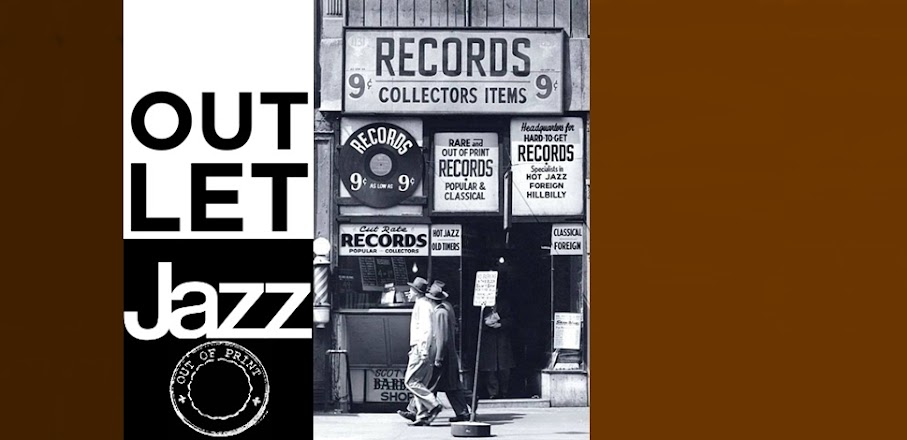I became very serious with music in my last year of High School, and knew it was for me. I took up clarinet about this time and started studying sax, clarinet and piano with a great teacher named Floyd Reese. I owe a lot to him. He taught me chords, progressions, scales, harmony, etc. Before I went to Floyd, I was just playing what I heard. I would listen for the chard, and then play it. I soon found out this wouldn’t work all the time, because there were many piano players who did't know the tunes either. After studying with Floyd Rees for two years I began to really understand what to do. In 1942 I enlisted in the U.S.N.R. and made first class musician in, the Navy band. Later, I was put in charge of a military aid dance band. We needed music for our dance band, so i began to write short arrangements and counter melodies to some of the tunes that I knew. This was the beginning of my composing and arranging.
After getting out of the Service in 1946, I helped organize an all-star group with such artists as Charles Mingus — Bass; Lucky Thompson — Tenor; Britt Woodman — Trombone; Spauldin Givens — Piano, and Oscar Bradley — Drums. The group was terrific. We had six writers out of seven guys and this really made each guy work hard to bring in something good. After the group broke up, I started studying at Los Angeles Conservatory, then later I studied at California Academy of Music, and the American Operatic Laboratory. I started playing Flute while at Los Angeles Conservatory and later studied with Martin Ruderman and Henry Woempner. I studied Sax with Merle Johnston, Clarinet with Soccorso Pirolo, and the Shillinger System of Musical Composition with Franklyn Marks.
I think of the quartet as one section. When I play Flute, I think of some Chamber Group or Woodwind Group. With tenor or alto, I still try to blend with my rhythm section as though they were other horns. In this way, we get a lot of variety for a quartet. We enjoyed making this album for ABC-Paramount very much because of the freedom we had. *Buddy Collette (liner notes)*
Quite possibly the rarest session ever cut by Buddy Collette — a quartet session with an unusual group that includes Dick Shreve on piano, John Goodman on bass, and Bill Dolney on drums — all players that get past the usual west coast crew that Buddy mostly recorded with! The format here builds on Colette's work with the Chico Hamilton group — and features a number of sprightly tracks with flute in the lead, and Hamilton-like support from the rest of the group. But then there's other numbers that have Buddy more out front on alto sax — blowing with a nice raspy edge and a bit more of a bop feel that's mighty nice. *dustygroove.com*
In the summer of 1956, Buddy Collette left Chico Hamilton’s successful quintet to begin his own career as a leader. His first quartet stayed together for three months. Then, along with John Goodman, still on bass, Buddy found in pianist Dick Shreve, and drummer Bill Dolney, his ideal rhythm section. With such an outstanding group, Collette, on alto, tenor, clarinet and flute, developed a concept full of beauty, taste and strength, played with warmth and great feeling.
Dick Shreve, too, proves in this session that he was not only a talented and underrated pianist in a gentle and reflective manner, but also a fine composer. *Jordi Pujol*
Side 1
1 - Winston Walks
(Goodman)
2 - If She Had Stayed
(Shreve)
3 - They Can't Take That Away From You
(G. and I. Gershwin)
4 - Undecided
(Shavers, Robin)
5 - Flute In "D"
(Collette)
6 - The Continental
(Conrad, Magidson)
Side 2
7 - Three And One
(Collette)
8 - Night In Tunisia
(Paperelli, Gillespie)
9 - Johnny Walks
(Collette)
10 - Perfidia
(Dominguez)
11 - Morning Jazz
(Shreve)
Buddy Collette (alto sax [#4, #9)], tenor sax [#2, #7], flute [#1, #3, #5, #8, #10], clarinet [#6, #11]), Dick Shreve (piano), John Goodman (bass), Bill Dolney (drums).
Recorded at ABC Studios, Hollywood, California, January 24, 1957.


https://www.mediafire.com/file/nhp3ub5vk4lfrgw/BC_clmclndclltt.rar/file
ReplyDeleteMuchas gracias
ReplyDeleteThank you.
ReplyDeleteFascinante B. Collette, muchas gracias.
ReplyDeleteMuchas gracias.
ReplyDeleteThank you, blbs.
ReplyDeleteVery nice blog, with wonderful music. Thank you, blbs!
ReplyDelete